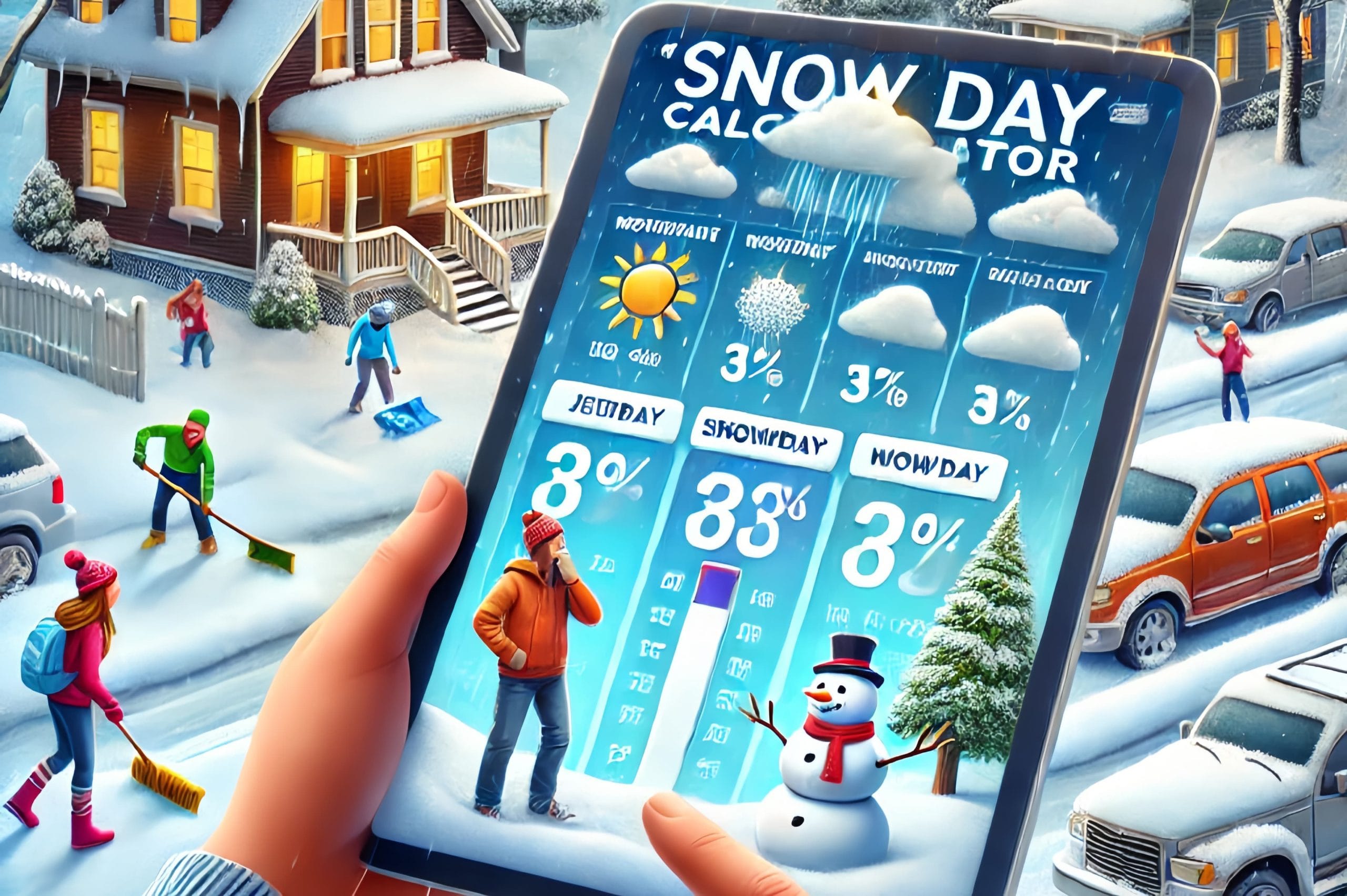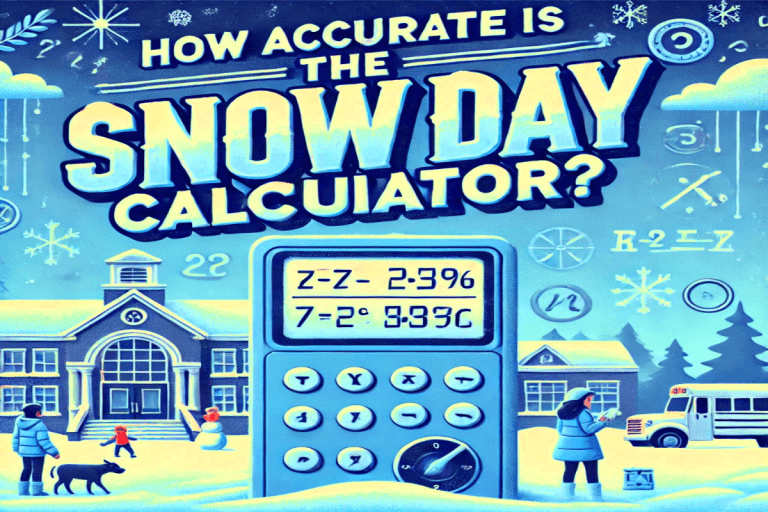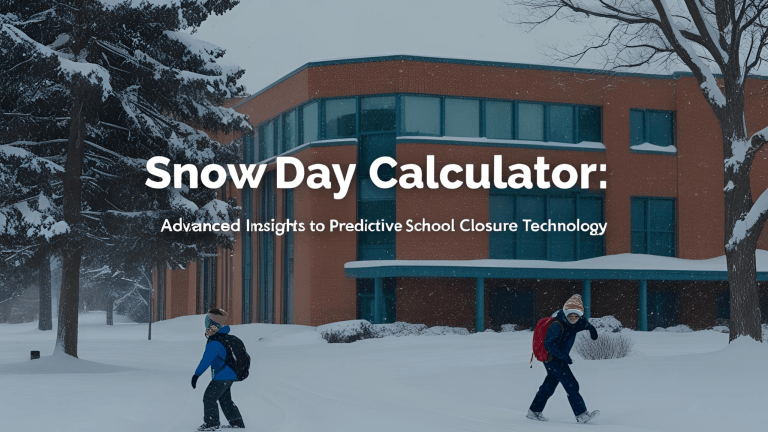Snow Day Calculator are a common question for families and school closing predictor staff during the winter season. It is at this point that a snow day tracker Calculator becomes useful.
Snow closures are predicted using a mix of data, algorithms, and local policies. Is it really that simple? Here is a step-by-step guide to help you understand.
Gathering Weather Data
snow day caculater collect weather data in real-time. Among them are:
– Current Conditions: Weather factors including temperature and wind speed.
– Forecast Data: 7 day snowfall forecast accumulation and timing of the storm, as well as the possibility of freezing rain.
– Historical Data: Details about past weather patterns and storm impacts.
The calculator pulls this information from trusted meteorological sources such as government weather agencies and private forecasting services.
Analyzing School District Policies
Snow tomorrow Schools are closed when there is bad weather according to the rules set by each school district. The following factors may affect these policies:
– Snowfall Thresholds: Some schools will close when there is 2-3 inches of snow, while others will do so if there is more than 6 inches.
– Timing: Snowfall occurs during peak travel times (early in the morning or late at night).
– Road Safety: Cold and hazardous conditions on the roads are often the reason for closures.
Predictions are based on local policies incorporated into the Snow day Generator.
Combining Weather Data with Algorithms
Ai snow day calculator calculates the probability of snow days by processing multiple variables. Among the factors to consider are:
– Snow Accumulation: Snow accumulation is a primary indicator. Closed areas are more likely to be affected by higher amounts.
– Storm Timing: Overnight or early morning storms are more likely to disrupt school, resulting in more snow days.
– Temperature: Cold weather, particularly in conjunction with snow or ice, may also cause closures.
– Wind and Visibility: Snow-blown wind might affect visibility and influence decisions as well.
Snow day percentages are calculated by weighting each factor and processing the data.
Location-Specific Predictions
Cold day Calculator uses your zip code or city to focus predictions on your specific location. By localizing the snow day prediction, it ensures that it accurately reflects the conditions in the school district. In a small region, weather patterns can vary significantly. It is essential to have localized data.
Updates in Real-Time
Whenever new data comes in, the Snow Day Calculator updates its predictions. Here are some examples:
– Evening Predictions: Predicted from weather forecasts for the following night and morning.
– Early Morning Updates: Describe changes or adjustments in storm paths from overnight weather.
As a result of this real-time capability, users can make informed decisions closer to an event’s date.
User-Friendly Output
It is typically expressed as a percent chance of a snow day. Here are some examples:
– 80% or Higher: The likelihood of a snow day is very high. Preparing for a day off is time-consuming!
– 50%-70%: A moderate chance, often dependent on the storm’s exact timing or intensity.
– Below 30%: Low likelihood of school closure, meaning most activities will continue unaffected.
A calculator may also display the output in color (green, yellow, red) or provide interactive features.
Factors Affecting Accuracy
Calculators for snow days are helpful, but they’re not perfect. It is possible for their accuracy to be affected by several factors:
– Weather Unpredictability: Storm intensity and timing can change suddenly.
– Human Decision-Making: Administrators finalize school closure decisions, which may take into account various factors differently from algorithms.
– Regional Variations: York region school Poor road conditions may cause schools to close earlier in rural areas, whereas schools with better snow removal infrastructure may be open longer in urban areas.
Optional Features
Advanced Snow Day Calculators include:
– School Delay Predictions: Predicting when schools will open late rather than close altogether.
– Customizable Settings: Provides the user with the option to alter predictions based on school policies.
– Notifications: Information about significant changes in the weather or possible snow days is sent to users.
Conclusion
Snow Day Calculator uses weather forecasts, local policies, and real-time updates to predict Richmond green secondary school closures. Families and educators can prepare for winter weather disruptions by processing complex data using algorithms. Snow days aren’t foolproof, but this is a fun and practical way to anticipate whether they’ll happen.





